
A cabildo insular is the government and administration institution of each of the seven major islands in the Canary Islands archipelago: Tenerife, Fuerteventura, Gran Canaria, Lanzarote, La Palma, La Gomera and El Hierro. The island of La Graciosa falls under the jurisdiction of the cabildo of Lanzarote.

Euphorbia atropurpurea, called tabaiba majorera or tabaiba roja in Spanish, is a shrub in the family Euphorbiaceae native to Tenerife in the Canary Islands. It can reach 2 metres in height, and grows in ravines, and on slopes and terraces.

The Diocese of San Cristóbal de La Laguna, also called Diocese of Tenerife or Diocese Nivariense, is a diocese located in the city of San Cristóbal de La Laguna in the Canary Islands and a suffragan in the ecclesiastical province of the Archdiocese of Sevilla in Spain. The diocese includes the islands of Tenerife, La Palma, La Gomera and El Hierro, in the province of Santa Cruz de Tenerife. The bishop of this diocese is Bernardo Álvarez Afonso.
Tourism is an essential part of the economy of the Canary Islands, a Spanish archipelago located in the Atlantic Ocean, 100 kilometres west of Morocco. Seven main islands and six islets make up the Canary Islands. They had more than 9 million foreign incoming tourists in 2007. Tourists seeking sunshine and beaches first began to visit the Canaries in large numbers in the 1960s. The Canary Islands are a leading European tourist destination with very attractive natural and cultural resources.

Aeonium urbicum is a succulent species of flowering plant in the family Crassulaceae. It is endemic to Tenerife, one of the Canary Islands, where it grows on the north of the island from Teno point to the Anaga peninsula. Until 1999, it was also considered a resident of La Gomera, another Canary Island, but that year the populations on that island were considered a new species and named Aeonium appendiculatum.
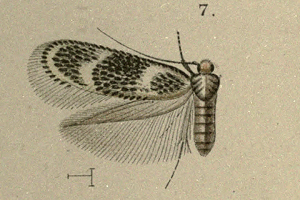
Ectoedemia jubae is a moth of the family Nepticulidae. It is endemic to the Canary Islands.
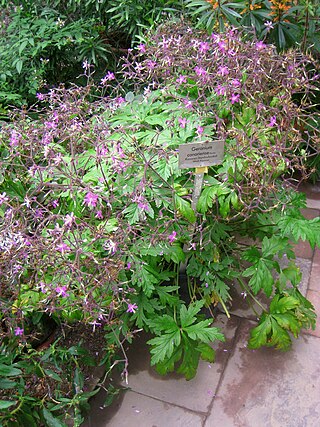
Geranium reuteri, the giant geranium, is a species of flowering plant in the family Geraniaceae, endemic to the Canary Islands. It was known for many years under the name Geranium canariense. In Spanish, it is called pata de gallo.
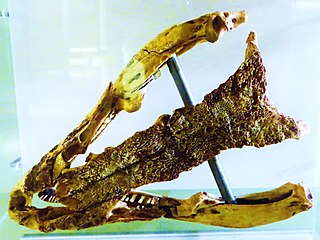
Gallotia goliath is an extinct giant lizard species from the island of Tenerife of the Canary Islands, Spain. This reptile lived before the arrival of humans and is believed to have grown to at least 0.9 metres (3.0 ft) long. It was described by the German herpetologist Robert Mertens. Fossils of this lizard have been found in volcanic caves, where they often appear with those of other animals, like the Tenerife giant rat.

Globularia salicina is a shrub native to the archipelago of Madeira and to the central and western Canary Islands.
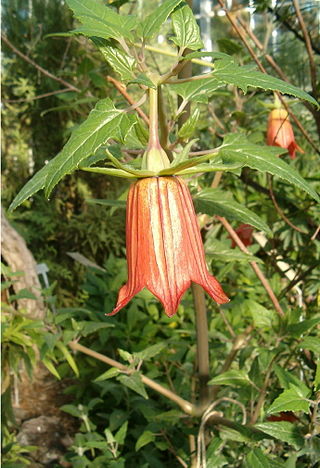
Canarina canariensis is a species of flowering plant in the bellflower family Campanulaceae, commonly known as the Canary Island bellflower, and known locally as bicácaro.
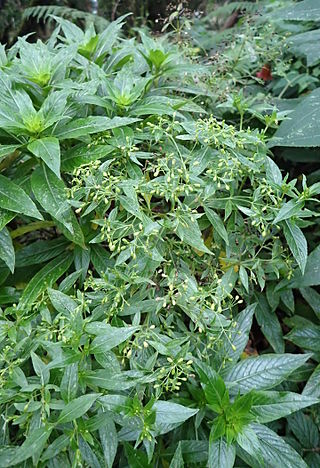
Phyllis nobla is a small, glabrous or pubescent subshrub in the family Rubiaceae.

Euphorbia anachoreta is a species of flowering plant in the family Euphorbiaceae, endemic to the Fora Islet of the Savage Islands. This species has been considered a Critically Endangered species due to its highly restricted population size. As most other succulent members of the genus Euphorbia, its trade is regulated under Appendix II of CITES.

Euphorbia aphylla is a species of flowering plant in the family Euphorbiaceae. It is native to the Canary Islands. It was first described in 1809.
The scientific name Euphorbia obtusifolia has been used for at least three species of Euphorbia:

Euphorbia regis-jubae is a species of flowering plant in the family Euphorbiaceae, native to the eastern Canary Islands, western Morocco, north-western Western Sahara. In Spanish, it is known as tabaiba morisca. It has often been confused with Euphorbia lamarckii.

Aeonium aureum is a species of flowering plant in the Stonecrop Family Crassulaceae, native to the Canary Islands. It has very short stems, usually with several leaf rosettes. The grey-green leaves are tightly packed and fleshy. The bright yellow flowers are produced on leafy stems, and are up to 25 mm (1 in) across.These flowers are extraordinary in being 32-merous (trigintoduomerous) i.e. having usually 32 sepals, 32 petals, 32 stamens and an ovary of 32 carpels each organ class in single whorls. It can have as few as 28 in a whorl to as many as 35, with 32 being the most common.
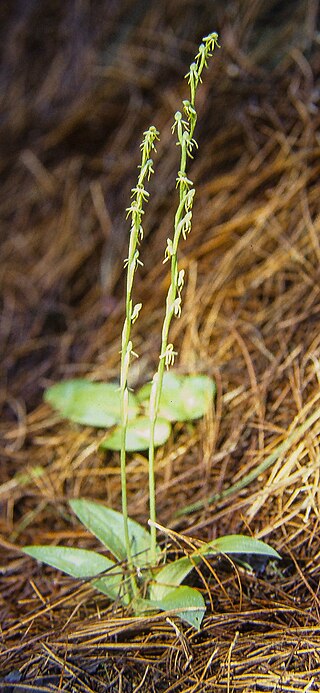
Habenaria tridactylites, the Canary three-finger orchid, is a species of flowering plant in the family Orchidaceae, native to the Canary Islands. It was first described by John Lindley in 1835.

Echium aculeatum is a species of flowering plant of the family Boraginaceae. It is endemic to the Canary Islands, where it occurs on the islands El Hierro, La Palma, La Gomera and Tenerife. Its name in Spanish is ajinajo.
Inés Peraza de las Casas was the territorial lady of the Canary Islands, which she inherited from her father Hernán Peraza the Elder and her late brother Guillén Peraza.

















